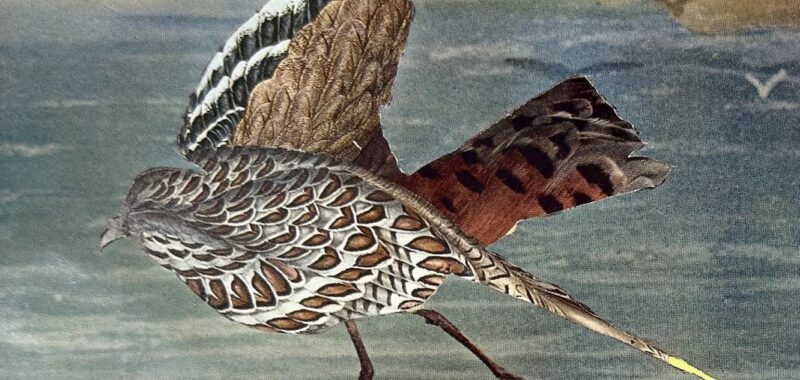BETHANY, Connecticut — Shortly after I met Peter Sharp and Michelle Cawthorn, Australian artists who had been awarded a two-month residency at the Josef and Anni Albers Foundation, they invited me to visit, saying they would make sure I could come to the “Vault” and see little known Albers works. A few days later, I wrote to Peter to plan the trip. I also invited myself to the studio he and Michelle were sharing, as I had done some online sleuthing and was interested in learning more about them and their art.
Both Sharp and Cawthorn work primarily in drawing (although Cawthorn’s practice intersects more with painting and installation). Sharp explained to me that residency projects are conceived to interact with Josef Albers’s innovations with color or Anni Albers’s pioneering work in textile design and weaving. During their residency, Cawthorn and Sharp had gone to many galleries and museums in New York and made a point of visiting the Metropolitan Museum of Art, the largest art museum in the United States and fourth largest in the world, as there is nothing like it in Australia. This made me think about what information is transmitted and how it travels.
Sharp had made considerable progress on three separate projects in this short period of time. For one, cut strips of printed paper are evenly filled in with colored pencils and woven together, a nod to the Albers couple. The second project consists of covering and altering pages that he has excised from Josef Albers’s popular book Interaction of Color (1963). In the 70 pages Sharp had completed when I visited, some original content peered through his modifications. His goal, he said, is to create a completely altered book, with the pages in the same sequence, and his photograph in the place of Albers’s at the end of the book.


The third group of works, collectively titled Albers Drawings, is comprised of charcoal drawings depicting mushrooms, leaves, and other flora and fauna Sharp witnessed on his walks around the foundation’s property. Each drawing shows a single object from memory, a record of observations. One exception is group of abstract works, for which the artist covered a sheet of paper with a layer of charcoal before bringing it out into the rain; the drops dissolved the charcoal, leaving a series of uneven spots. I could guess the source of some images, while others eluded me.
While Sharp and I spoke, he brought up the bark paintings of John Mawurndjul, an Indigenous artist from Australia with whom I was unfamiliar. His mythical figures and his fine crosshatching done on bark, a technique called rarrk, reminded me that there are separate traditions in the United States and Australia that have almost nothing in common.
More than 9,000 miles of ocean separate our two countries. Australia, which has its own unique flora and fauna, is home to 850 bird species, with around 45 that are native to the country. During the last 15 years, researchers have proposed that Australia is the evolutionary home of the song bird or oscine passerine birds, which make up half of the world’s birds.

Cawthorn’s collages, collectively titled Anni’s Birds, feature images of birds pulled from a variety of sources, including John Gould’s seven-volume guide The Birds of Australia (1840–48), with illustrations by his wife, Elizabeth Gould, and others, based on specimens collected from Australia and its islands.
Cawthorn creates fantastical hybrids of birds from Australia and other parts of the world, which reminded me of Australia’s real and mythic hybrids, such as the duck-billed platypus and the Bunyip of Australian First Nations mythology. In some collages, after removing the original bird from the page, Cawthorn filled in the negative space with different anatomical parts. When she combines a bird native to Australia with one from the Eastern seaboard of the United States, she reenacts the migration of the songbirds from their native land to other continents.
In these works, Sharp and Cawthorn are landscape artists who don’t show you the landscape. While neither artist has made a point of emphasizing Australia’s distinct ecological identity, I felt that it played a strong role in how they interacted with nature, which is the source of their art. They both home in on something found in nature, such as a pine cone or a bird. Cawthorn’s attention to the history of Australia, from its songbirds through Gould’s encyclopedic guide and Sharp’s attention to common items found in the landscape, has resulted in distinct bodies of work worthy of prolonged attention.


